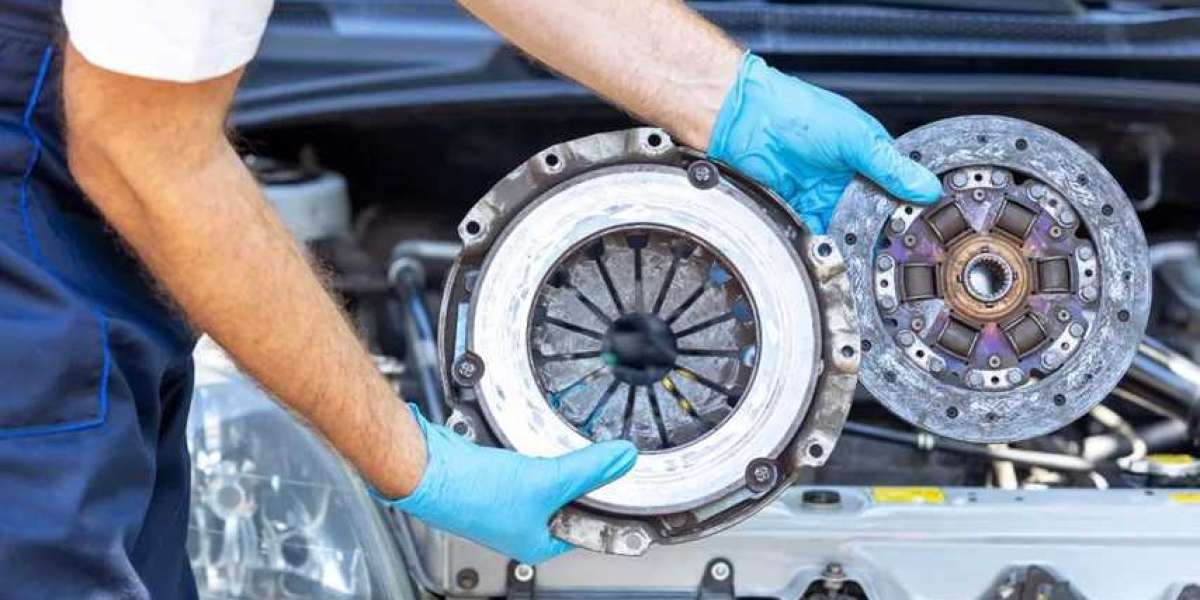When it comes to vehicle safety, your braking system is one of the most critical components. Every time you hit the road, you rely on your brakes to function properly and ensure a smooth, safe driving experience. Therefore, ensuring that your car has quality brake parts is essential during any brake repairs. Substandard or worn-out parts can compromise your safety, increase repair costs, and reduce the performance of your vehicle.
In this guide, we’ll discuss the importance of using high-quality brake parts, what to look for during brake repairs, and how to ensure your vehicle's braking system remains in peak condition.
Why Quality Brake Parts Matter
Your car’s brake system is a complex set of components designed to work together to bring your vehicle to a safe stop. This system includes brake pads, rotors, calipers, and brake fluid. Over time, these parts wear down and need to be replaced. Using subpar or cheap brake parts might save you money in the short term, but they can have significant long-term consequences.
1. Safety
First and foremost, the safety of your vehicle depends on the quality of your brake parts. Low-quality parts may not provide the stopping power you need in critical situations. This can increase the risk of accidents, especially in emergency braking scenarios or adverse weather conditions. High-quality brake components are designed to withstand heat and pressure better, reducing the risk of brake failure.
2. Longevity
Using premium brake parts can extend the lifespan of your braking system. While cheaper parts may wear out quickly, requiring more frequent brake repairs, investing in high-quality components ensures that you won’t have to replace them as often. In the long run, this saves you time, money, and effort.
3. Performance
The performance of your braking system directly impacts how well your vehicle handles. Quality brake parts ensure that your car responds promptly when you apply the brakes, improving control and handling. This is especially important for drivers who navigate through challenging terrain or heavy traffic.
4. Resale Value
If you plan to sell your car in the future, the condition of your brakes will play a significant role in determining its value. Well-maintained brakes with high-quality parts can boost your vehicle’s resale value, while worn-out, low-quality parts can significantly reduce it.
Key Components to Focus on During Brake Repairs
When you take your vehicle in for brake repairs, it’s crucial to know what to look for to ensure that you’re getting the best parts available. Here’s a breakdown of the most important components to focus on:
1. Brake Pads
Brake pads are one of the most commonly replaced components in a braking system. They’re designed to press against the brake rotors and create the friction necessary to stop your car.
- Material: High-quality brake pads are typically made from ceramic, semi-metallic, or organic materials. Ceramic pads, while more expensive, offer superior performance, durability, and quieter operation. Semi-metallic pads are also a good choice for performance but may wear down the rotors more quickly.
- Heat Resistance: Look for brake pads that are designed to withstand high temperatures, especially if you live in a hot climate or do a lot of stop-and-go driving. Heat-resistant pads prevent brake fade and ensure consistent braking performance.
2. Brake Rotors
Brake rotors (or discs) work in conjunction with the brake pads to stop your vehicle. They are another critical component that should be inspected during any brake repairs.
- Material: Quality brake rotors are typically made from cast iron, carbon composites, or ceramic. Cast iron rotors are the most common and offer a good balance between cost and performance. For high-performance vehicles, carbon composite or ceramic rotors may be preferable due to their superior heat resistance and lighter weight.
- Ventilation: Ventilated rotors, which have small slots or holes, help to dissipate heat more effectively. This is especially important for drivers who do a lot of high-speed or downhill driving, where braking generates significant heat.
3. Brake Calipers
Brake calipers house the brake pads and push them against the rotors when you apply the brakes. They play a crucial role in the overall functionality of your braking system.
- Durability: Look for brake calipers made from high-quality, corrosion-resistant materials such as aluminum or stainless steel. This ensures they can withstand exposure to moisture, salt, and other environmental factors that cause corrosion.
- Even Pressure: Quality calipers ensure that pressure is evenly distributed across the brake pads, preventing uneven wear and ensuring optimal braking performance.
4. Brake Fluid
Brake fluid transfers the force from your foot on the brake pedal to the brake pads and rotors. Over time, brake fluid can absorb moisture, which reduces its effectiveness and can lead to brake failure.
- Fluid Type: Ensure that you’re using the correct type of brake fluid for your vehicle. The two main types are DOT 3 and DOT 4, with DOT 4 offering higher heat resistance. Consult your vehicle’s manual to determine which type is recommended.
- Fluid Condition: During brake repairs, always check the condition of the brake fluid. If it appears dark or cloudy, it’s time to replace it. Regular fluid changes prevent moisture buildup and ensure that your brakes perform reliably.
Signs You Need Brake Repairs
Understanding the signs of brake wear is key to addressing issues early and avoiding more costly repairs later. Here are some common indicators that your brakes may need attention:
- Squealing or Grinding Noises: If you hear high-pitched squealing or grinding when you apply the brakes, it’s a clear sign that your brake pads are worn and need to be replaced.
- Vibration When Braking: A vibrating or pulsing brake pedal often indicates warped rotors, which require immediate attention.
- Soft or Spongy Brake Pedal: If your brake pedal feels soft or spongy, it could indicate air in the brake lines or a problem with the brake fluid.
- Longer Stopping Distances: If you notice that your car is taking longer to stop than usual, it’s likely a sign that your brake pads or other components are worn.
How to Ensure Quality During Brake Repairs
To ensure that you’re getting quality brake parts during repairs, follow these tips:
- Work with Reputable Mechanics: Always choose a reputable mechanic or auto repair shop with experience in brake repairs. Ask for recommendations or read online reviews to find a trusted provider.
- Request OEM Parts: OEM (Original Equipment Manufacturer) parts are designed to meet the exact specifications of your vehicle. While aftermarket parts can be cheaper, OEM parts typically offer better performance and durability.
- Inspect Parts Before Installation: If you’re unsure about the quality of the parts being used in your repair, ask to see them before installation. This allows you to inspect them for any signs of wear or subpar craftsmanship.
Conclusion
Investing in quality brake parts is crucial for the safety, performance, and longevity of your vehicle. During brake repairs, it’s important to focus on key components such as brake pads, rotors, calipers, and brake fluid. By ensuring that you’re using high-quality parts and working with a trusted mechanic, you can protect yourself on the road and avoid frequent repairs. Keep an eye out for signs of brake wear, and address any issues promptly to maintain optimal performance and safety.








